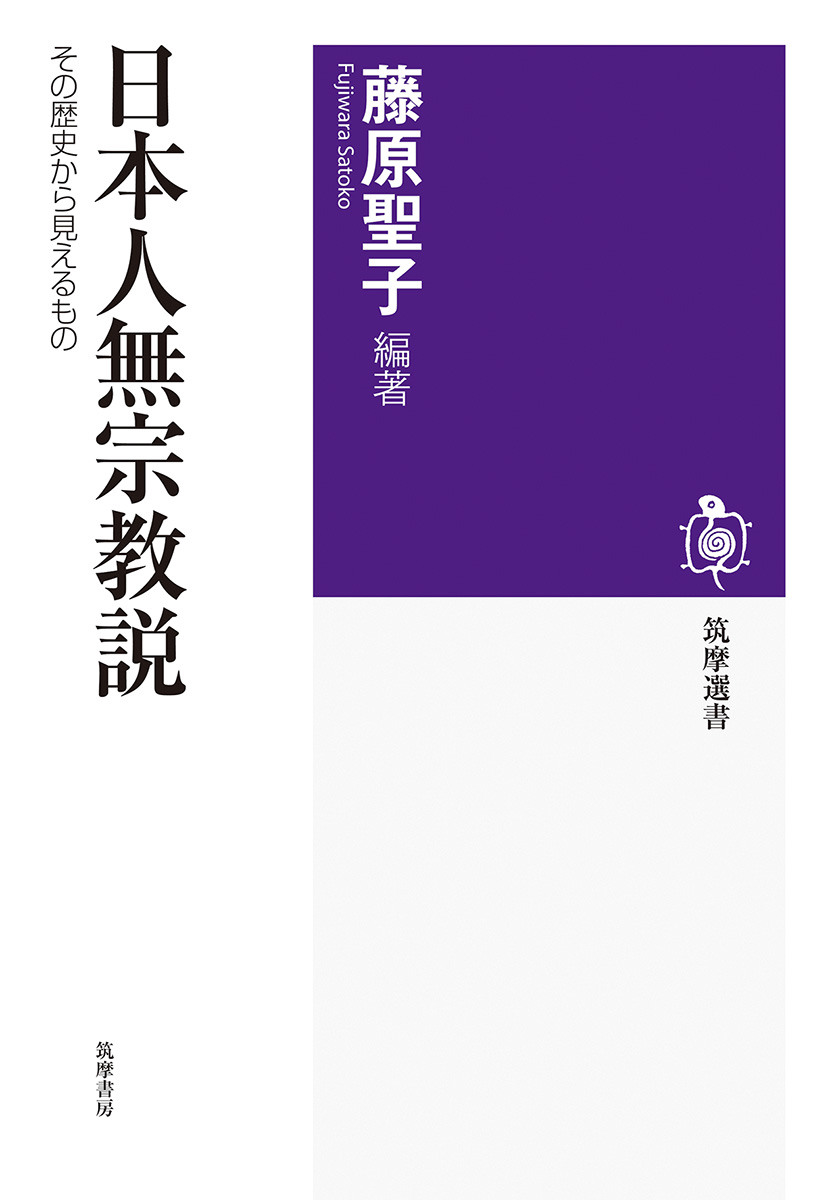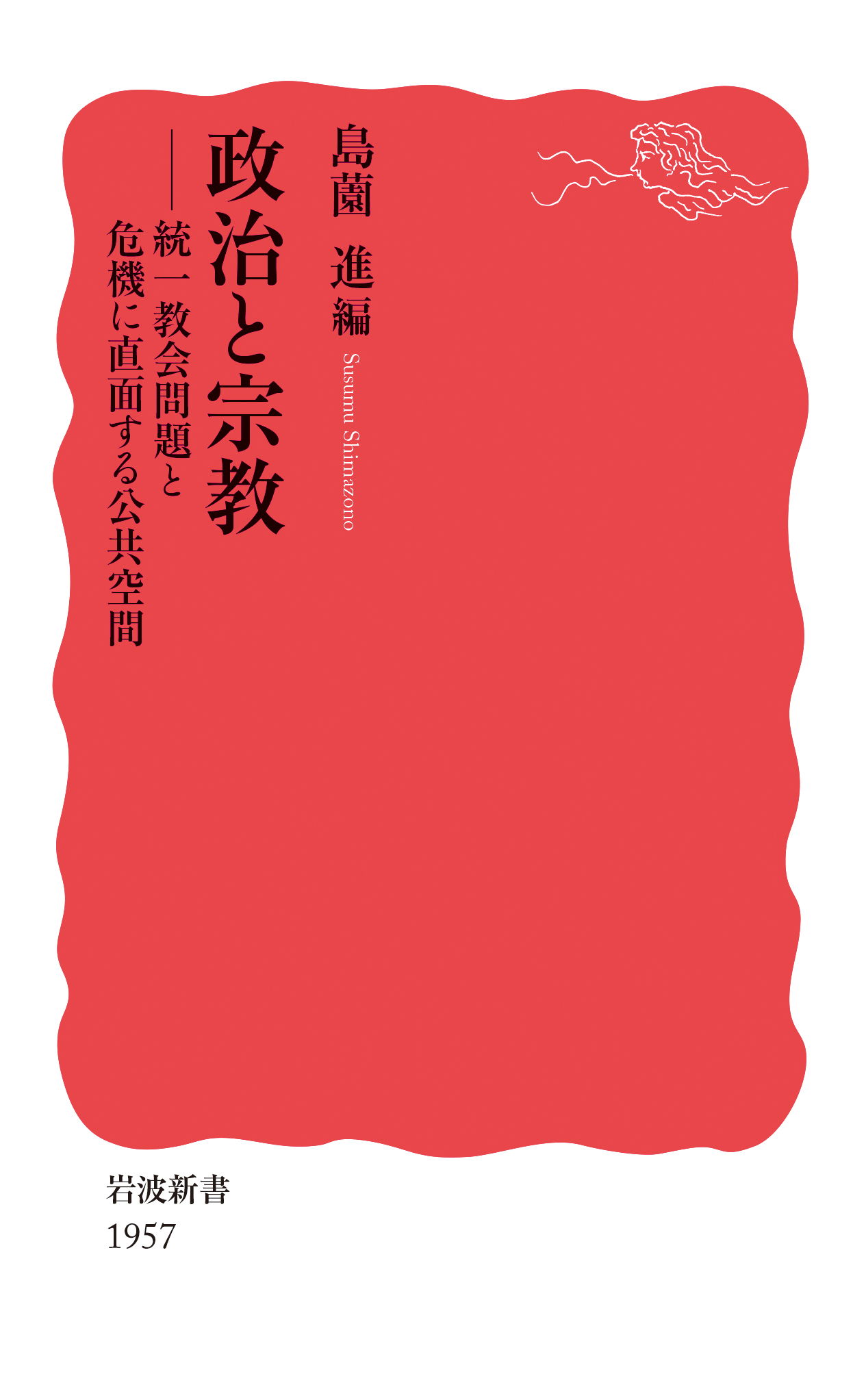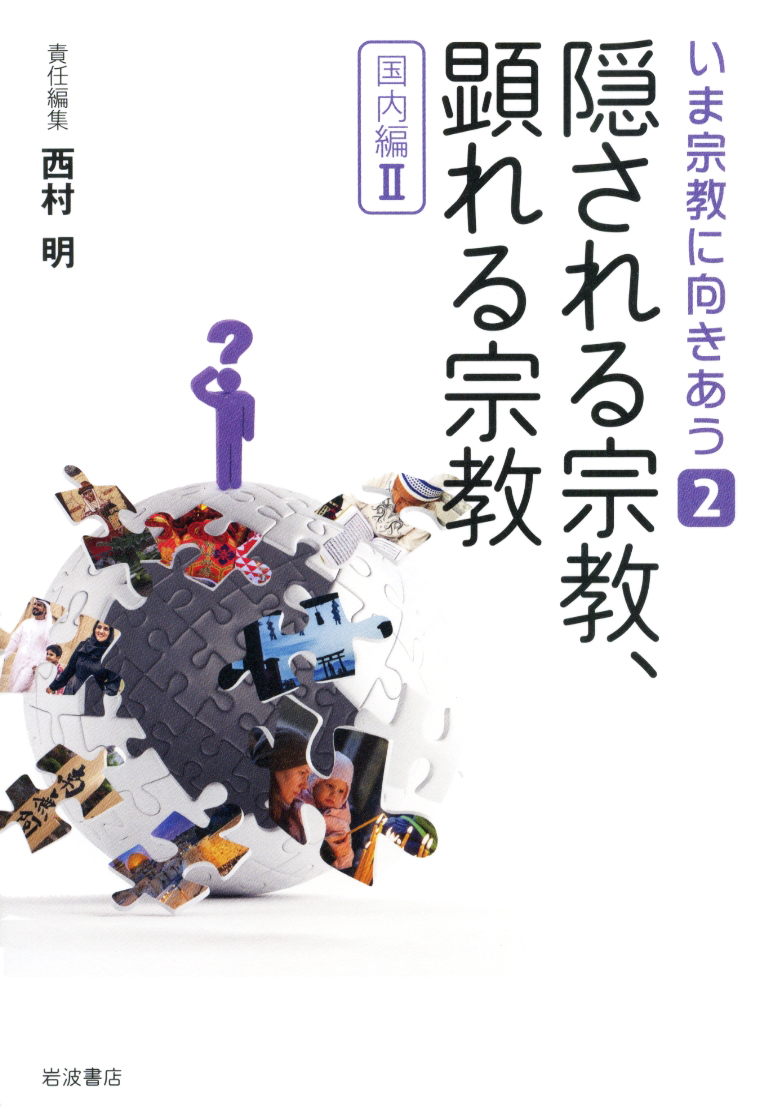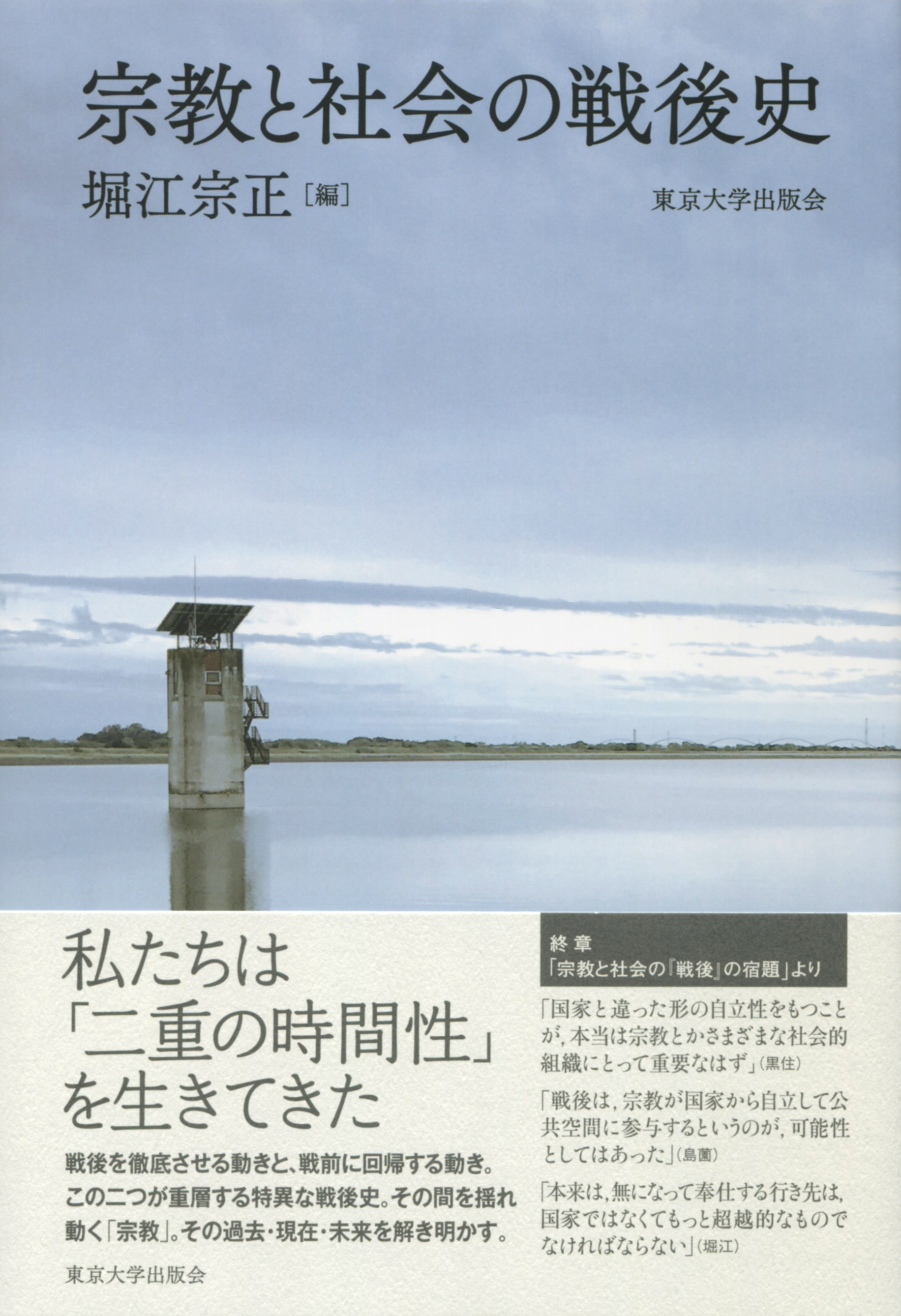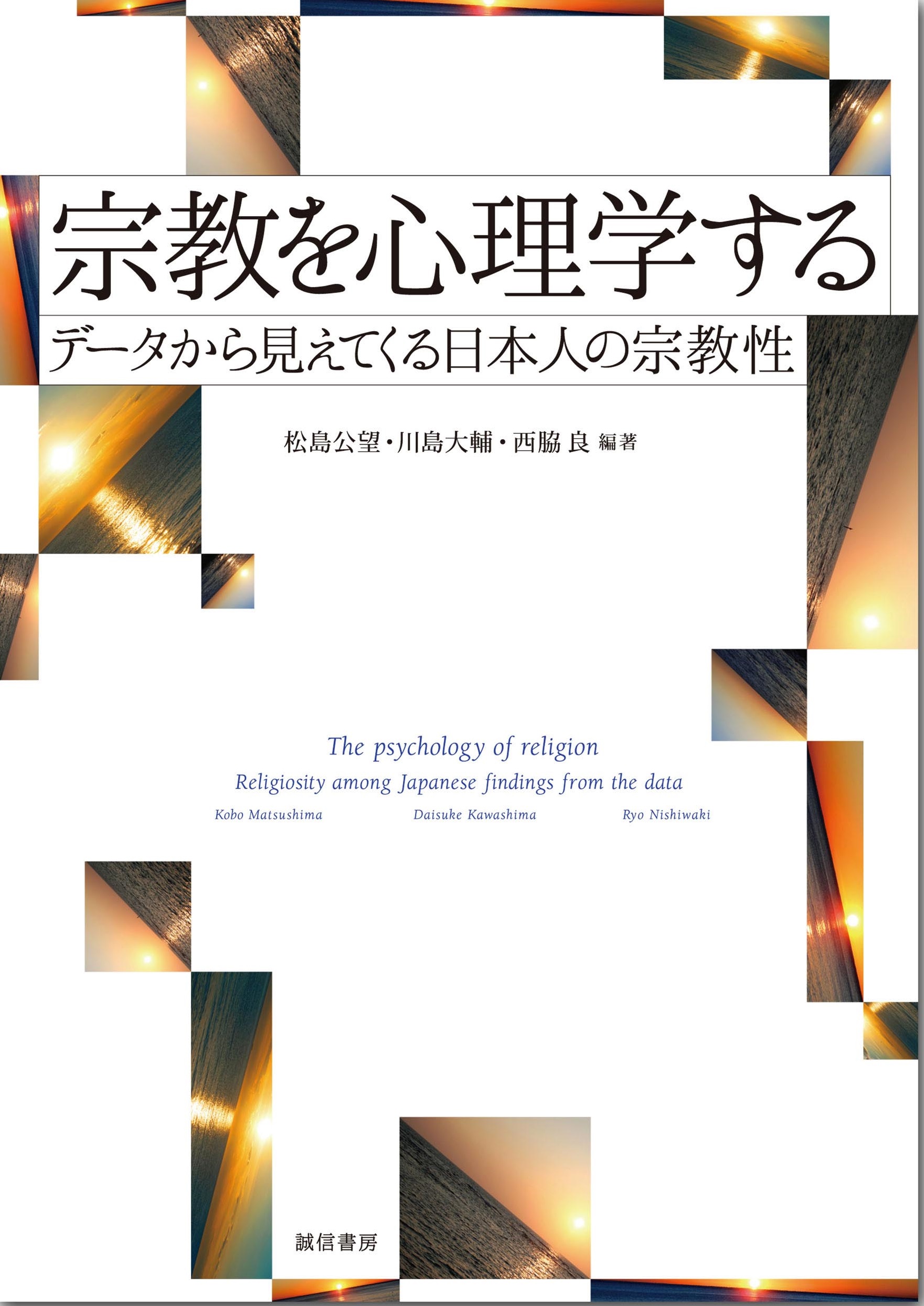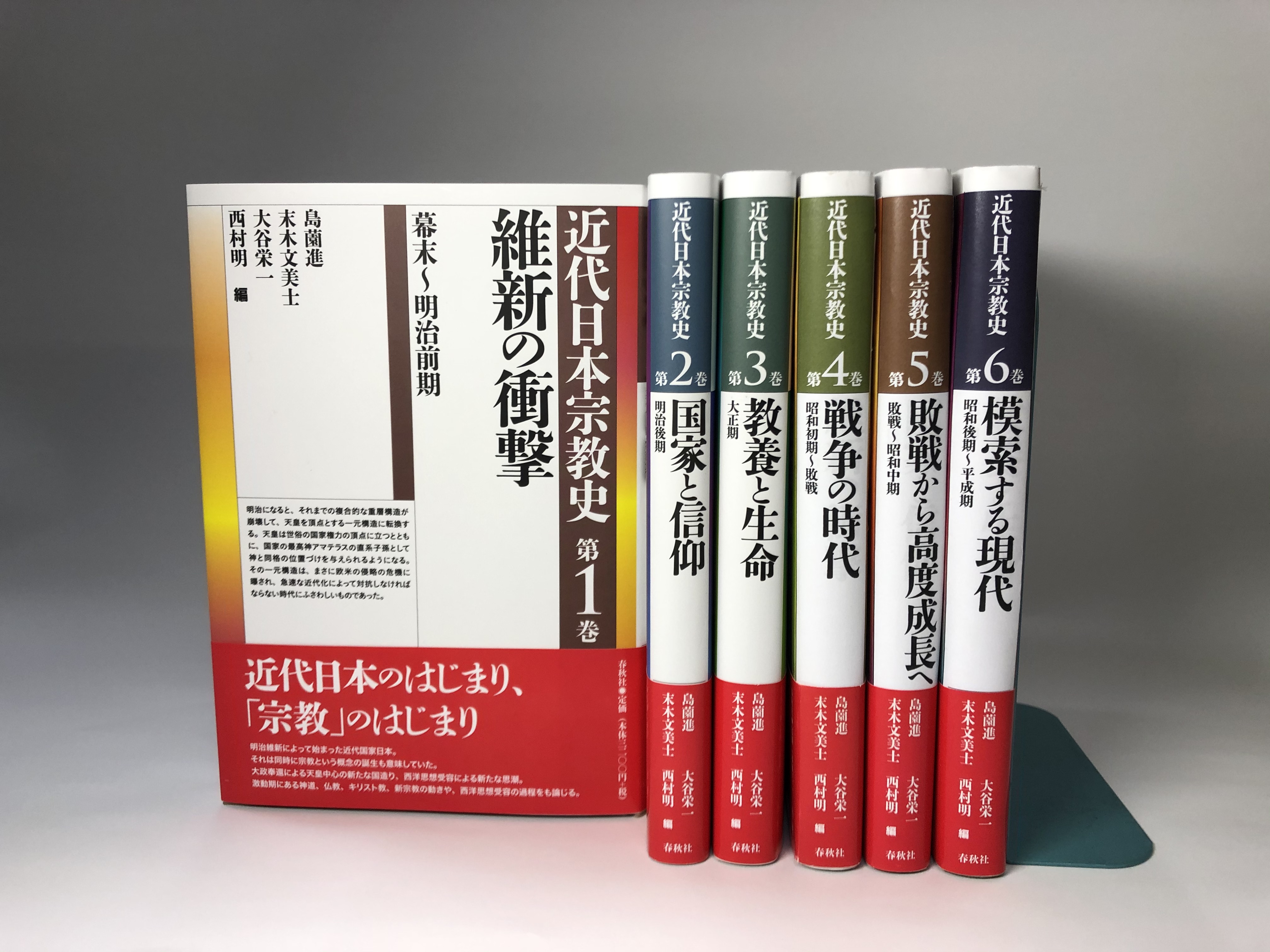
Title
Kindai nihon shūkyō-shi (History of Religions in Modern Japan, 6 volumes)
Size
A5 format
Language
Japanese
Released
2021
ISBN
(vol.1) 9784393299616
(vol.2) 9784393299623
(vol.3) 9784393299630
(vol.4) 9784393299647
(vol.5) 9784393299654
(vol.6) 9784393299661
Published by
Shunjusha
Book Info
See Book Availability at Library
Japanese Page
When I lecture on religions in modern Japan in the classroom, the students show a variety of reactions. In particular, at the start of the course, many of the students who identify as “non-religious” would listen to explanations of different religions as somehow other people’s affairs. As the course progresses, however, they come to realize that their own points of view and values are the results of ongoing negotiations between different religions, between religions and the state, and furthermore, between religions and other social spheres. They show genuine surprise at the realization that religion is both an immediate part of their lives and critical for understanding the tumultuous times we live in.
This book series is an unprecedented collection of essays that places the history of religions in modern Japan front and center in the history of the country. Written by more than 80 scholars active in this field, the essays and columns in this collection discuss both in breadth and depth the institutions and policies surrounding religions, discourses of religious figures and thinkers, and various religious practices.
The six volumes are organized in chronological order. Although termed “modern,” the history covered in this series spans about 150 years—from several generations ago to the present time, from the end of the Tokugawa shogunate to the end of the Heisei era. The division of history by reign eras here is meant to capture the atmosphere of each period in an easy to understand manner. In addition, this organization allows readers to observe the historical features of modern Japan, where the change of emperor has had significant impact on the climate of the times. It also allows readers to notice religious characteristics inherent in the prewar and postwar national systems, typified respectively by constitutional monarchism and the symbol emperor system. In addition, while this series is focused on Japan, there are many areas for which we must heed international trends. For example, to understand Buddhism in modern Japan, we must understand the major impact of religious trends in not only East Asia but also regions such as India, Europe, and the United States.
Each volume begins with an introduction to readers by the four editors, followed by general remarks in the first chapter, written by one of the editors. Each chapter and its columns have a particular theme for understanding the religions of that time period. Representative case studies and new discoveries in recent years are introduced in an easy-to-understand manner. At the same time, the characteristics of the volume’s era are described to illuminate the chapter’s theme and provide an overview. Through all the volumes, consciousness of the boundary between “religion” and “non-religion (the secular world)” and the ways in which these domains exist in each historical period is kept at the forefront of discussions. In the chapters and volumes, topics such as war, tourism, and the consumer society, which at first glance seem completely unrelated to religion, are presented as means to bring out the contours of religion in each historical period.
As you read the essays, you will notice relationships between various topics extending across chapters and volumes. So, while you can read through all the volumes from beginning to end, if you feel like you will give up in the middle, I recommend beginning at the end or with a topic you are interested in.
(Written by NISHIMURA Akira, Associate Professor, Graduate School of Humanities and Sociology / 2022)



 Find a book
Find a book


